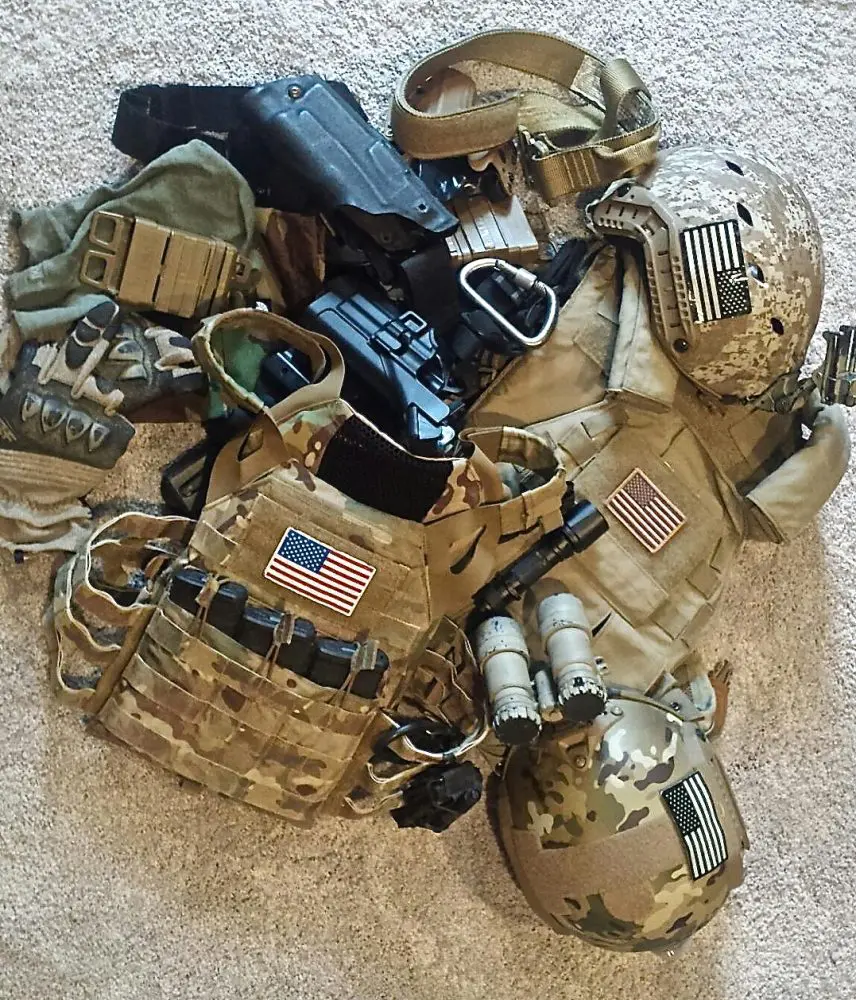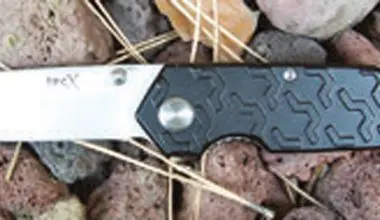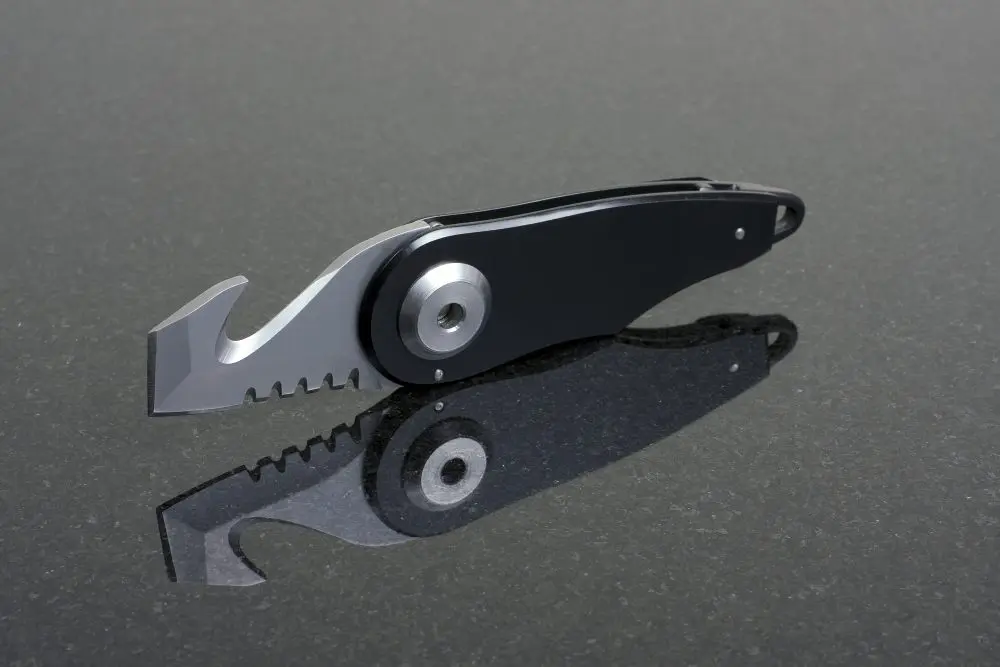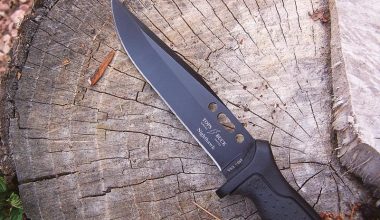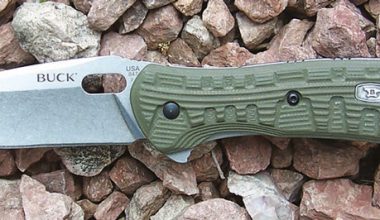Before the first Rambo movie had everyone running out to their local sporting goods store looking for a hollow- handled, saw-back survival knife, and way before Ray Mears and the Bushcraft craze had everyone looking for the perfect Scandi grind knife, there was a classic old woods knife that has stood the test of time.
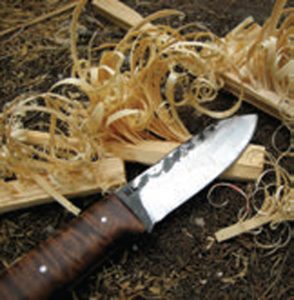
Table of Contents
AMERICAN CLASSICS
When people think of American classics, they probably envision hot dogs, baseball games, Coca-Cola, ‘57 Chevys, etc., but I’m sure very few think of knives. But in fact, many classic knives are designed and made in America. To name a few: Bowie Knife, Hudson Bay Trade Knife, Dall DeWeese Knife, Nessmuk Knife, Roach Belly Knife, and the list goes on. Among these classic American knives is the Kephart, derived from the writings of Horace Kephart.
Horace Kephart (1862-1931) was an author, librarian and iconic outdoorsman. He spent most of his life traveling the southern mountains researching the area and its inhabitants. He wrote hundreds of articles during his lifetime, but became especially renowned for his classic works Our Southern Highlanders and Camping and Woodcraft.
Camping and Woodcraft was the bible of outdoor living in its day and remains a standard for practical advice on outdoor activities almost 100 years later. These two books are still in print and remain popular.
During the 1920s, Horace Kephart used his significant influence to promote the formation of Great Smoky Mountains National Park. Sadly, he died in an automobile accident and did not live to see the establishment of the national park in 1940.
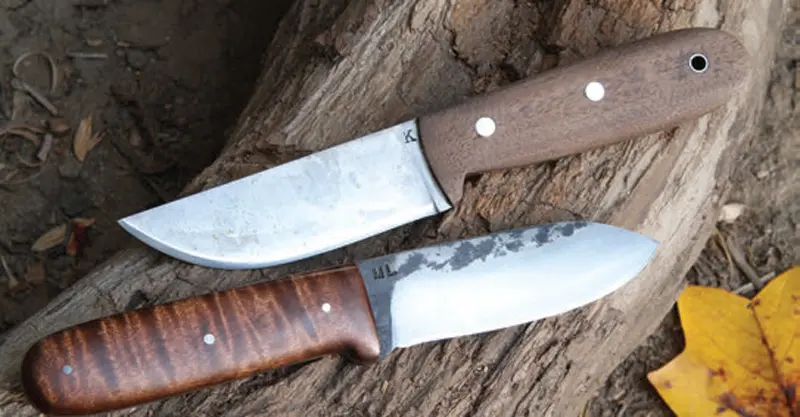
KEPHART DESIGN
The following is an excerpt from Camping and Woodcraft in which Horace describes his idea of the perfect knife.
A camper has use for a common-sense sheath-knife, sometimes for dressing big game, but oftener for such homely work as cutting sticks, slicing bacon, and frying “spuds.” For such purposes a rather thin, broad-pointed blade is required, and it need not be over four or five inches long. Nothing is gained by a longer blade, and it would be in one’s way every time he sat down. Such a knife, bearing the marks of hard usage, lies before me. Its blade and handle are each 4 ¼ inches long, the blade being 1 inch wide, 1/8 inch thick on the back, broad pointed, and continued through the handle as a hasp and riveted to it.
It is tempered hard enough to cut green hardwood sticks, but soft enough so that when it strikes a knot or bone it will, if anything, turn rather than nick; then a whetstone soon puts it in order. The Abyssinians have a saying, “If a sword bends, we can straighten it; but if it breaks, who can mend it.” So with a knife or hatchet. The handle of this knife is of oval cross-section, long enough to give a good grip for the whole hand, and with no sharp edges to blister one’s hand. It has a 1/4 inch knob behind the cutting edge as a guard, but there is no guard on the back, for it would be useless and in the way.
The handle is of light but hard wood, 3/4 inch thick at the butt and tapering to 1/2 inch forward, so as to enter the sheath easily and grip it tightly. If it were heavy it would make the knife drop out when I stooped over. The sheath has a slit frog binding tightly on the belt, and keeping the knife well up on my side. This knife weighs only 4 ounces. It was made by a country blacksmith, and is one of the homeliest things I ever saw.”
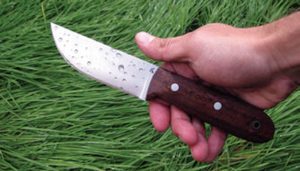
This is one of the clearest accounts of what later became the Kephart knife.
In recent years there has been a rebirth of the famed classic knife. Custom knife makers have been reproducing the Kephart knife and staying true to the design that Horace Kephart devised.
Years ago I saw a photo of an old ad from a company out of Pennsylvania called the Colclesser Brothers. The ad read “Kephart Sheath Knife. 4-inch blade and sheath, $1.75 or 5-inch blade and sheath, $2.00.” Times have changed and prices are much higher now. Still, I’m glad this timeless pattern is back.
The first Kephart knife I saw was made by a well-known and respected custom knife maker, Scott Gossman. To me, it looked like a very good quality kitchen knife. That may not sound like an endorsement, but the simple yet effective design struck me.
Here is where I must make a comparison between the Kephart design and the Swiss Army Knife. In Camping and Woodcraft, Horace described his perfect knife as having a spear-pointed blade with a handle sporting an oval cross-section. That is exactly what the Swiss Army Knife looks like.
ML KNIVES
The first Kephart knife I ever got my mitts on was made for me by Matt Lesniewski of ML Knives back in 2007. I had spent many a night looking at his website, and the Kephart was always my favorite. Matt uses techniques that an early 18th to 19th century bladesmith would use. He primarily uses 1095 carbon steel, and each blade is hand forged. His sheaths are works of art that stand out on their own.
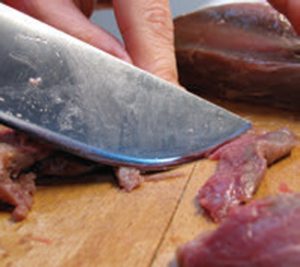
My ML Kephart has about a 4-inch blade and 4 ¼-inch long handle. The handle scales are made from Tiger Maple and have that oval cross-section, making it rounded enough to not give any hot spots to the user, yet not so round as to turn in the hand. The blade shape is a spear point and the thickness is 1/8 inch. The edge is a full convex with a few visible forge marks. I can best describe it as rustic simplicity!
JK HANDMADE KNIVES
Custom knife maker John Kiedaisch of JK Handmade Knives is no stranger to the pages of S.W.A.T. Magazine. His line of tactical knives was featured in the March 2009 issue, and his more modern Bushcrafter Knife was used in the Against All Odds column called Survival Bushcraft 101 in the December 2010 issue.
John makes all the classics—Roach Belly, Hudson Bay, Nessmuk, and Herters Improved Bowie. And I think he has made more Kephart knives than any other knives he offers.
I got one of his early Kephart knives made from 01 tool steel, satin finished with oak scales and a leather sheath. The dimensions were pretty similar to that of Matt’s version. John did something special for me: he made a straightspined Kephart with a slightly shorter, thinner blade and the more classic walnut scales. This design has more belly and a much more defined tip. In my opinion, it is one of the best all-around hunting/woodcraft knives—light and unobtrusive. That’s my style!
Matt and John have truly captured the essence of the Kephart knife and, with makers like them paying their respects to this classic American bush knife, it will likely live on forever.

